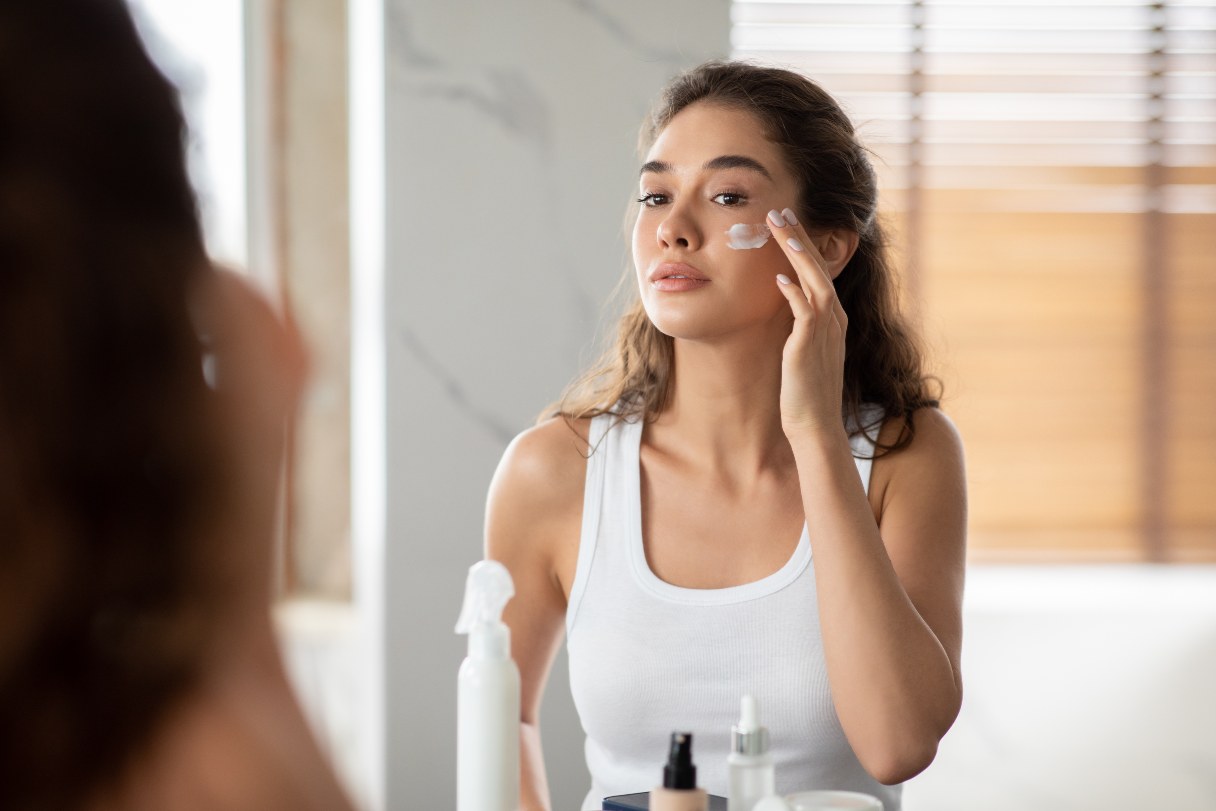Even the most resilient skin can become sensitive to the changing elements from season to season. However, winter often brings bitter winds and freezing temperatures, as well as more frequent exposure to heating elements, which can cause redness, dryness and skin irritation.
It can be frustrating to see your skin change with the weather, but there's no need to despair. Thankfully, there are winter skin care steps you can take to support healthy, hydrated skin before the cold can do any damage.
Here's a list of 13 top tips you can use to maintain hydrated skin even in the chilliest weather.
1. Adjust Your Skin Care Routine
If your skin seems drier in winter, you may need to change a couple of your skin care products and/or routine. You can add new products to your skin care routine or just as easily opt to avoid products that aggravate dryness. To help keep skin moist, primarily stay away from products that will further strip moisture from your skin, such as acids or retinol.1
2. Use a Humidifier
In a season of dry air, where heating systems compound the problem, adding moisture back into your home environment through a humidifier can help rehydrate skin. These are often simple and easy to operate. In addition, a hydrating mist will also help you breathe better during cold and flu season.1
3. Add an Overnight Hydration Mask
If you want to help your skin build hydration quickly, consider an overnight mask that locks in moisture all night. You want to look for products with ultra-hydrating ingredients such as hyaluronic acid and ceramides.2
4. Exfoliate
If your skin is really dry, you may need to add exfoliation into your routine, which helps slough away dead skin cells. Opt for medical-grade exfoliants, such as alpha hydroxy acids (AHAs) or beta hydroxy acids (BHAs), but pay attention to whether these make your skin drier — if they do, choose something gentler. Exfoliate no more than two to three times per week in the evening so you don't overly strip your skin.3
5. Cleanse Gently
To avoid stripping too much of your skin’s natural oils, use a gentle, fragrance-free cleanser. Over-cleansing can irritate your skin — twice per day is enough. Also, avoid using soap, which can make skin drier.4
6. Protect Lips
Your lips are often one of the first things to become dry in winter. Dry lips are not only annoying, but they can become chapped or even crack painfully, so it’s important to tend to them. Petroleum jelly-based moisturizers will be best at creating a protective barrier and won't contribute to further dryness.1
7. Choose Creams Over Lotions
If your regular lotion isn’t cutting it this time of year, consider choosing a cream-based moisturizer instead, which tends to contain more oil than water. Additionally, if you need a heavy-duty moisturizer for rougher, more easily chapped parts of the body — like feet, hands and elbows — you could upgrade to an ointment. It might feel a little greasy going on, so consider wearing cotton gloves, socks or sleeves after application.1
8. Protect Skin With Comfy Clothing
A simple step to protect skin in winter, particularly against wind or other harsh weather conditions, is to keep covered if you’re going out in the elements. If your skin is already dry or prone to itching, opt for soft fabrics — like cotton or silk — that won't cause irritation.4 Additionally, change as quickly as you can if your clothing gets wet from exercise or the elements. Wet clothing can irritate the skin, especially if you have a condition like candidiasis or psoriasis.5
9. Use Sunscreen
Despite a lack of sun or warmth in winter, the sun doesn't take a vacation even through clouds. You still need to apply daily sunscreen if you’re going outside. Sunscreen protects against the formation of lines, wrinkles, and most importantly, skin cancer, all year.6
10. Limit Hot Water
Hot water feels great in a shower or bath, but it also can strip away natural oils in your skin. Try to limit hot water and aim for lukewarm, especially if you're prone to dryness or irritation. Also, if possible, bathe or wash your skin less frequently in winter.1
11. Drink Lots of Water
Keeping skin hydrated is as much an inside process as it is an external one. Increasing your water intake can help keep your whole body nourished, which helps your skin look its best as well. Keep a canteen or bottle filled by your desk, bedside or in your car.1
12. Take Vitamin D
Some research has found a connection between taking vitamin D supplements and preventing inflammation of the skin, which can worsen during the winter, particularly with conditions like eczema or psoriasis.7
13. Care for Your Feet
The feet are often forgotten in winter when they’re tucked away in shoes and boots and not on display like in the warmer months. Feet can be especially prone to cracking and dryness, so remember to give them some extra attention. Consider using an exfoliant followed by a rich emollient at night before putting some warm socks on. Or, you can try foot-specific creams that include super hydrating ingredients like shea butter, cocoa butter or coconut oil.8
Taking Care of Your Skin During Winter
While everyone’s skin is different, during winter, even the most balanced skin types can experience discomfort at best and aggravated skin conditions at worst. Adding or changing skin products, adjusting water temperature and wearing comfy clothing can go a long way toward making your skin look and feel its best, even in the worst weather.
Managing Health and Wellness Costs With the CareCredit Credit Card
If you are looking for an option to help manage your health and wellness costs, consider financing with the CareCredit credit card. The CareCredit credit card can help you pay for the care you want and need and make payments easy to manage.* Use our Acceptance Locator to find a provider near you that accepts CareCredit. Continue your wellness journey by downloading the CareCredit Mobile App to manage your account, find a provider on the go and easily access the Well U blog for more great articles, podcasts and videos.
Your CareCredit credit card can be used in so many ways within the CareCredit network including vision, dentistry, cosmetic, pet care, hearing, health systems, dermatology, pharmacy purchases and spa treatments. How will you invest in your health and wellness next?
Author Bio
Jordan Rosenfeld has been freelance writing for 21 years about finances, health, education and more. Her work has appeared in The Atlantic, The Billfold, Good Magazine, GoBanking Rates, Daily Worth, Quartz, Medical Economics, The New York Times, Paypal, The Washington Post and more.








